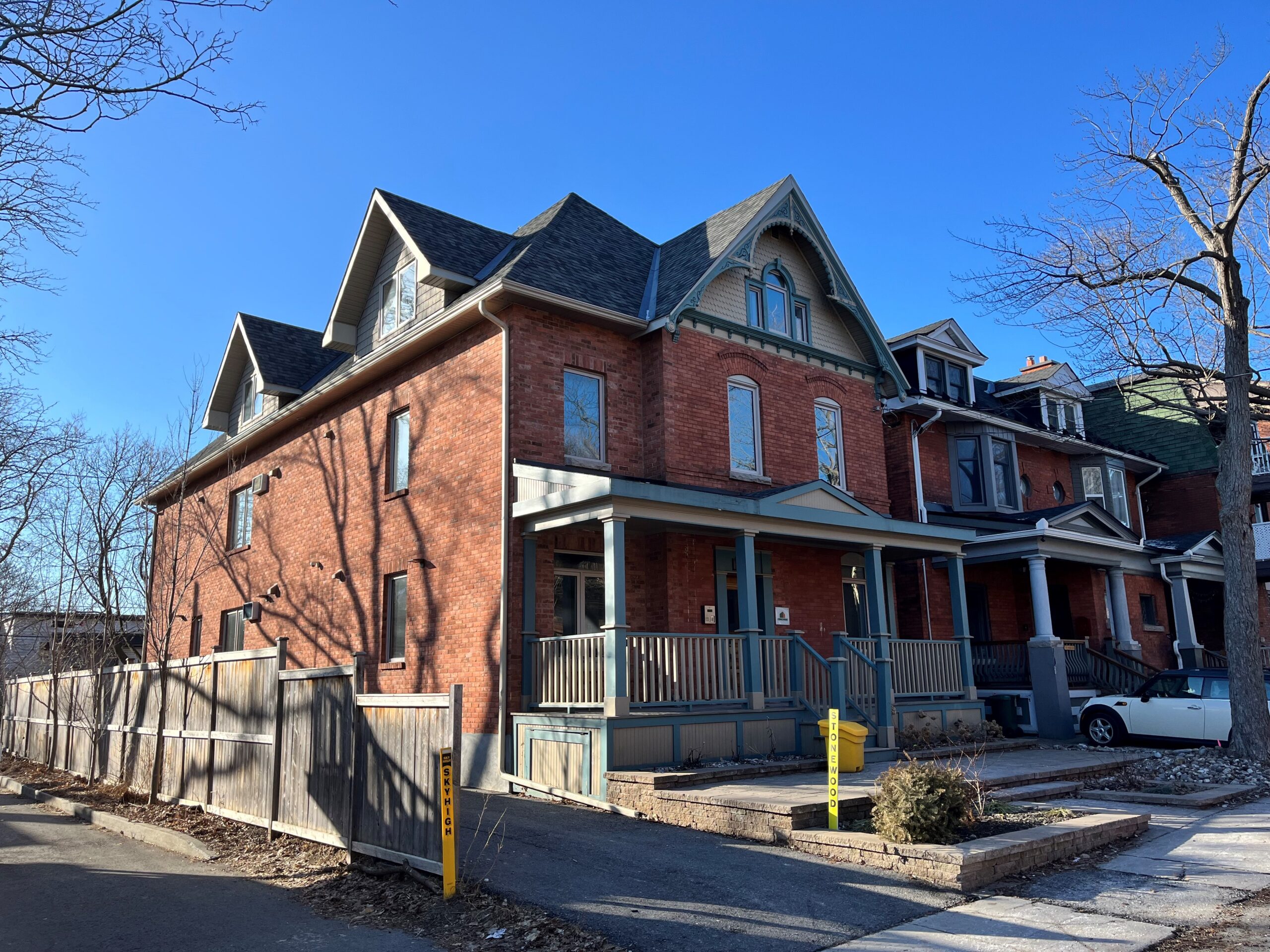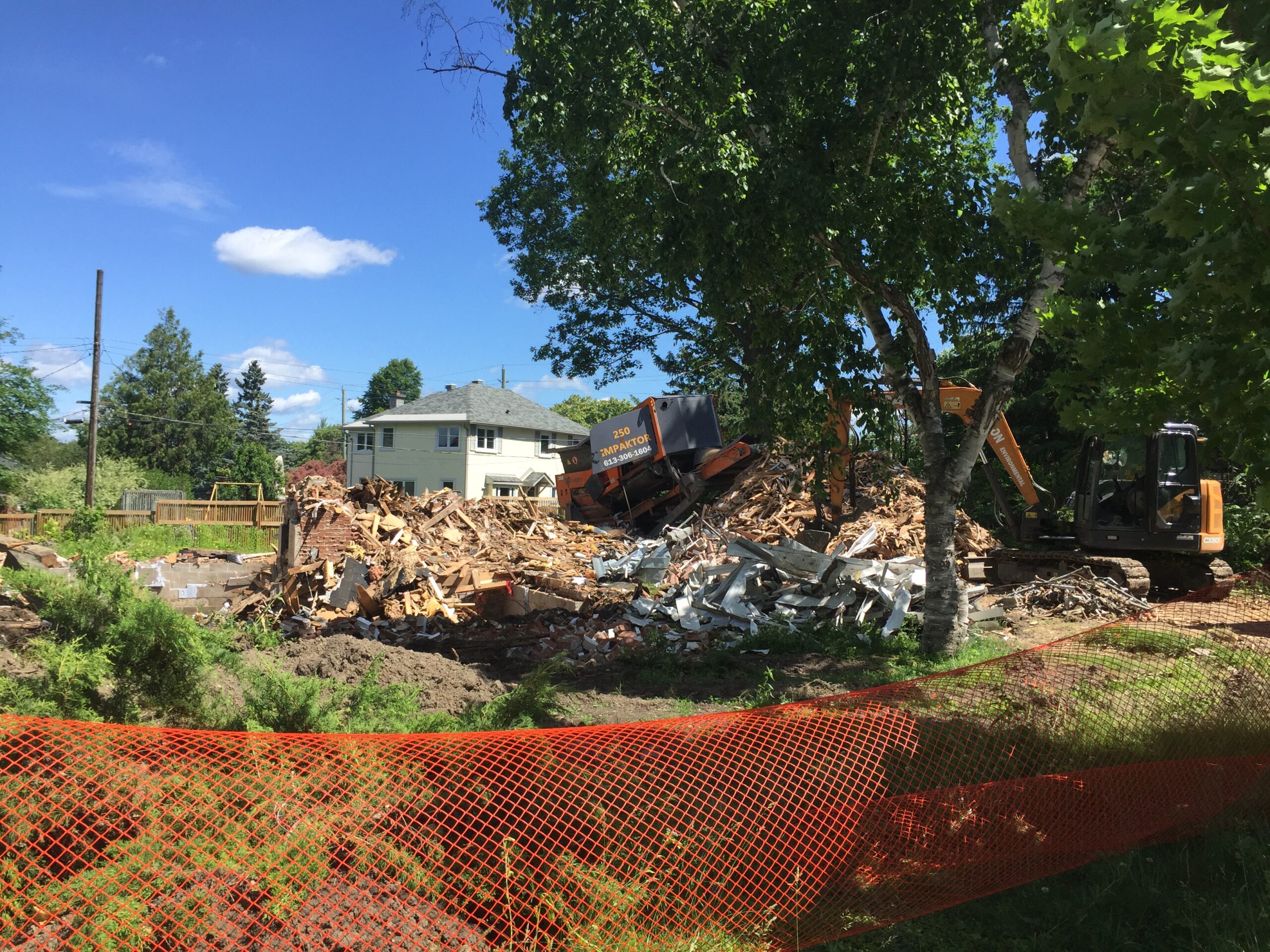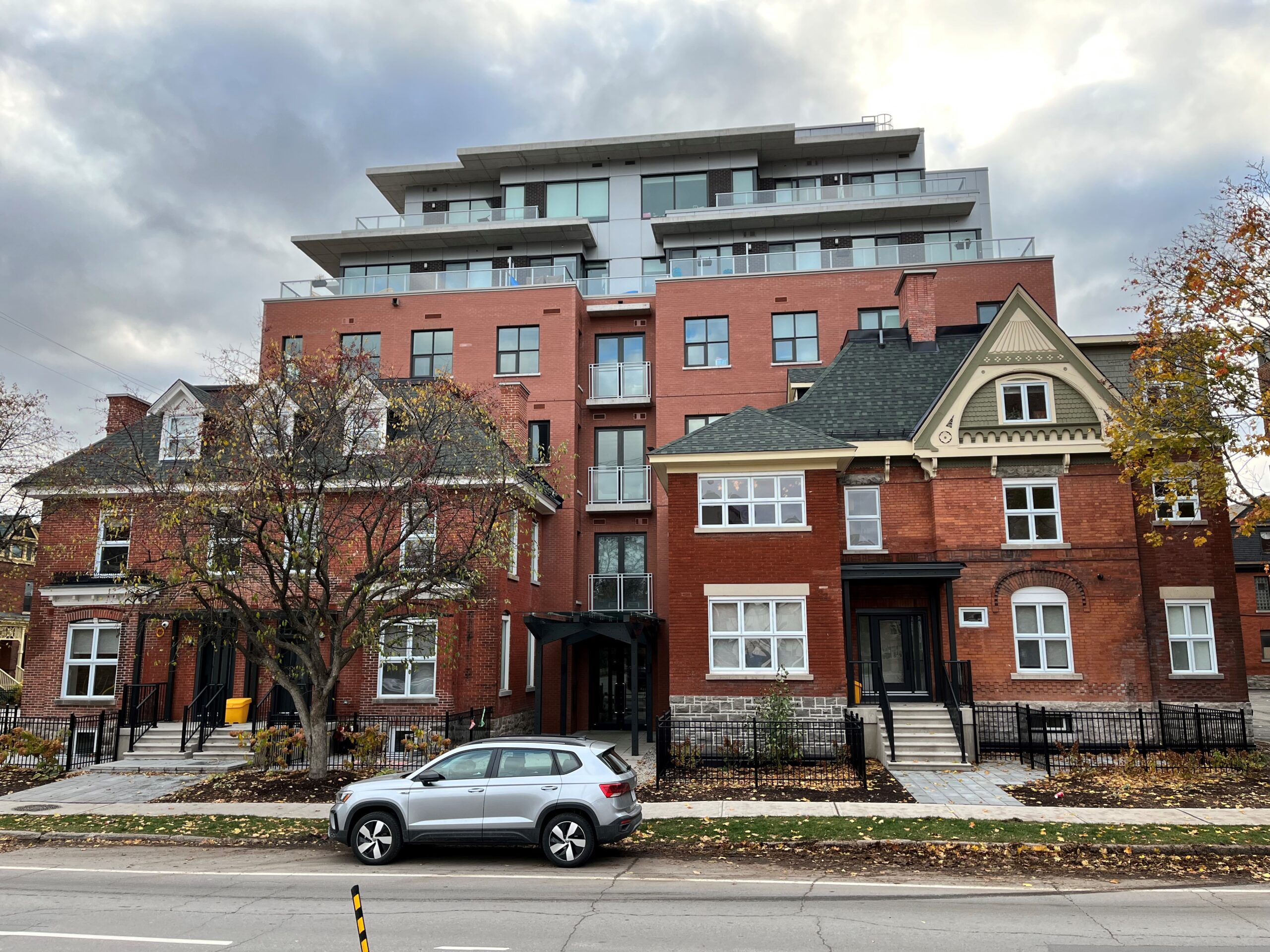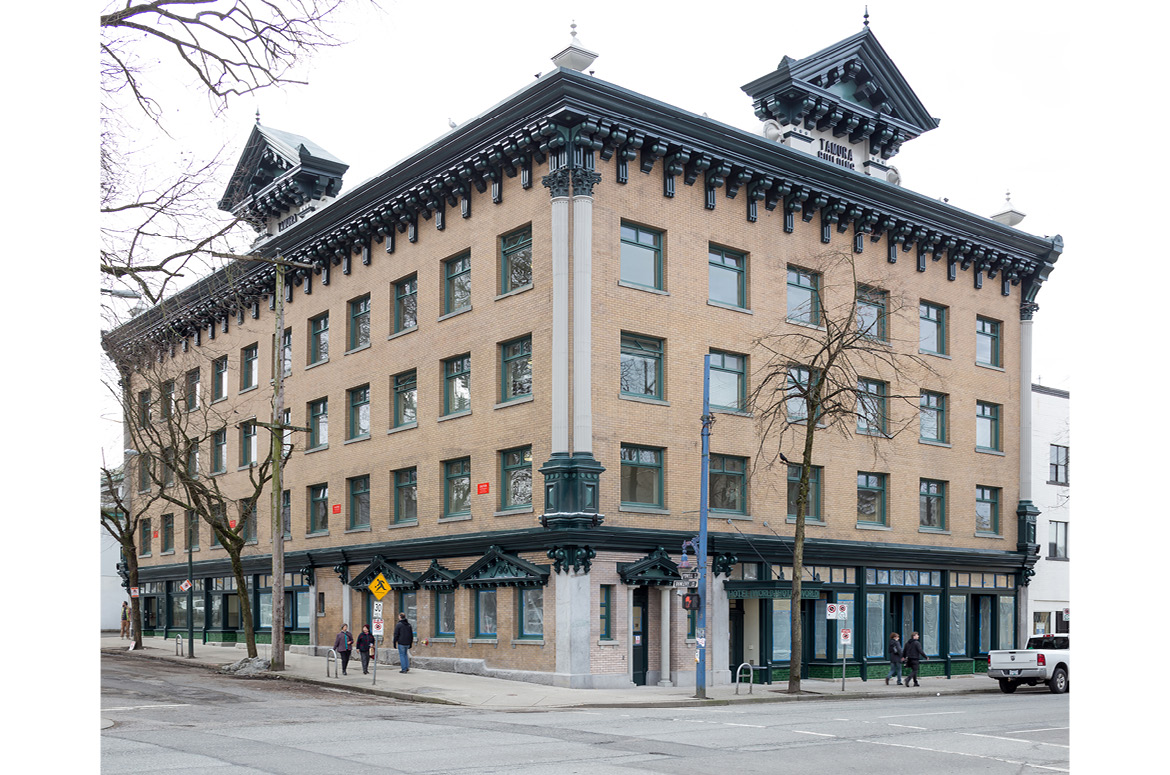Code Red: Heritage Conservation’s Contribution to the Housing Crisis
The heritage warning lights are flashing, the alarm bells ringing. The housing crisis and the need for affordable, inclusive, and safe housing has dominated Canadian headlines and political debate for months. In the recent push to accelerate housing creation, heritage protection, management, and identification tools have been targeted as housing impediments in a growing number of provinces and municipalities. What is going on, will this grow into a Canada-wide issue, and how should the heritage sector respond?
On November 28, 2022, the Ontario government passed into law Bill 23, the More Homes Built Faster Act, unleashing a series of legislative changes that included the biggest heritage protection rollback in Canadian history. Bill 23 wasn’t a complete surprise as its core ideas mirrored the recommendations in the Ontario Government’s February 2022 Report of the Ontario Housing Affordability Task Force. Its key statement: “While true heritage sites are important, heritage preservation has also become a tool to block more housing.” Responding to this perceived heritage-housing tension, Bill 23 guts out key tools in the Ontario Heritage Act, including: (1) making heritage designation for individual properties and heritage districts much harder to obtain, and easier to repeal; (2) curtailing the protection of undesignated but listed places deemed as having heritage potential by imposing a two-year limit on their inclusion on municipal Heritage Registers; and (3) prohibiting heritage designation once a planning application has been made. Municipalities across Ontario are now scrambling to triage the listed heritage properties on their Heritage Registers (essentially inventories) and quickly designate crucial ones in advance of province-wide delisting in January 2025.

Smart, quiet density! In 2024-2016, this rental house on 186 James Street, Ottawa expanded from 3 units to 11. But it still fits right into the neighbourhood.
All is not well elsewhere in Canada, either. This past fall, the Halifax Regional Municipality’s Housing Accelerator Fund proposed big changes to the Centre Plan guiding Halifax’s development. The Heritage Trust of Nova Scotia voiced its concern in a February 16, 2024 statement: “Although the proposed revisions provide specific exemptions/protections for registered heritage buildings and existing heritage conservation districts, we are concerned that the upzoning of surrounding neighbourhoods will simply provide more incentive to de-register and demolish registered heritage buildings on the Halifax peninsula and elsewhere in the Centre Plan area. We are also concerned that it will lead to the demolition of many as yet unregistered historic buildings and potential heritage conservation districts.”
Meanwhile in British Columbia, the provincial government appears to have taken a slightly more measured approach. A new Housing Statues Amendment Act received Royal Assent on November 30, 2023, bringing in as-of-right zoning for three to six units on lots (depending on size) currently zoned for single-family, and a host of other changes. As in Ontario, the use of heritage as a means to avoid new housing creation is flagged: “a heritage designation bylaw must not be used to prevent a use of real property, or the development of land to a density of use, permitted under the applicable zoning bylaw…” With the dawn of these as-of-right zoning increases, some heritage advocates in the province worry that the biggest loss is that local governments will no longer be able to play the density card as an incentive for heritage, utilizing BC’s unique “Heritage Revitalization Agreements.”
Even louder heritage alarm bells were set off on March 5, 2024 when the high-profile national “Taskforce for Housing & Climate” (stacked with prominent figures like Mark Carney, Jennifer Keesmaat, Don Iveson, and Lisa Raitt) released a Report for More and Better Housing. Intellectually, the document borrows heavily from the Ontario Housing Affordability Task Force that preceded it. “Create a more permissive land use, planning, and approvals system,” reads one of the report’s recommendations, “including repealing or overriding municipal policies, zoning, or plans that prioritize the preservation of the physical character of the neighbourhood.”

Lost opportunity. A well-kept single-family home in Ottawa’s Alta Vista neighbourhood becomes landfill, June 2022. Replaced by one large, new single-family home.
This is bracing stuff when you connect the dots. You can feel the momentum gathering that will soon bring these same arguments and “solutions” to a community near you. The idea that heritage protection and identification mechanisms need containment in order to build more housing seems to be metastasizing into a commonly held opinion or groupthink that no longer needs to be questioned. Even now it freely circulates unchallenged amongst a growing number of influential observers and elected officials, particularly in large urban areas.
How did it get to this point? “Gradually, then suddenly,” as Ernest Hemingway once quipped. Ontario-based municipal pundits have pointed to the City of Toronto’s “batch listing” of hundreds of older buildings along several commercial main streets in 2020, as a defining a moment where heritage drew the angry attention of housing advocates. But truthfully, the tension around heritage protection and development has been there since the dawn of the Canadian heritage movement in the 1970s, with heritage periodically characterized as obstructionist, elitist, and slowing development. The heritage and housing nexus, however, gained traction with the rise of the YIMBY (Yes in My Backyard) movement in San Francisco in the 2010s, which frequently characterized historic preservation as a housing suppressor. This YIMBY and heritage dynamic found fertile ground in many other cities, particularly Australia’s Melbourne and Sydney, as well as Toronto, where YIMBY voices habitually yoke together heritage and anti-density in social media posts.

Two heritage homes are integrated with substantial new infill at 280 O/Connor Street, Ottawa.
When it comes to the impact of heritage designation and identification on housing, how much is perception and how much reality? Let’s look at some of these claims, which break down into four general ideas:
- “The heritage sector has lost touch with important buildings and should stick to its lane, chiefly buildings of undeniable architectural value.” – When communities set about designating humble, architecturally undistinguished properties that nevertheless possess substantial social and cultural significance, these efforts are criticized as unnecessary and density killers. Interestingly, the heritage enterprise is often criticized by the same critics as elitist, and admittedly the lop-sided heritage designation legacy of mansions, banks, and fancy places, particularly from the 1970s and 80s when architectural value reigned supreme, is a big challenge.
- “NIMBY abuse of heritage or character neighbourhoods is undermining appropriate applications of heritage.” – While there are instances in Ontario and other jurisdictions where community groups and individuals have seized upon heritage status as a last-ditch NIMBY gambit to slow development, these are a rare exception rather than the rule. And where does the line fall between individuals/groups invoking heritage designation cynically or in good faith? Does the distinction matter if the heritage assessments are consistent and the result is that important places are designated? If all “11th hour” interventions are the benchmark for the abuse of heritage processes by NIMBYs then this is problematic, because for many properties their true value only emerges over time, and most assessments are only triggered as development plans advance and communities understand the potential loss.
- “Heritage is inflexible and shuts down additional density.” – In fact, stakeholders in Canada’s heritage conservation sector are pragmatic and recognize the need to review and revise existing heritage systems. Janet Li’s recent University of Waterloo MA thesis – Facadist Toronto: Heritage at Face Value (2023) – has brought together 100 examples of heritage “flexibility” and compromise in downtown Toronto resulting in façade-only retention. In the eyes of heritage critics, however, it is the reputed use of heritage to block density in residential neighbourhoods and commercial corridors that is their chief concern. Much of which appears to be extrapolated from high-profile, one-off cases.
- “Heritage protection and identification is accelerating out of control, and too many properties and districts are being recognized for their heritage value.” – In fact, the data emphatically shows otherwise. Only 2.4% of the building stock in Toronto is recognized as heritage in some way, while in Edmonton the number is 0.28%. By contrast, Tulsa (Oklahoma) has recognized 3.0%, New York City 3.9%, Boise (Idaho) 5.2%, and Tampa (Florida) 6.1%. And as for accelerating designations, most Ontario municipalities average 1 or 2 heritage designations per year, while the bigger cities (Hamilton and Ottawa) see around 5 per year, a statistic in line with other Canadian cities like Winnipeg and Calgary.
At the end of the day, does marshalling the data and the facts really make a difference to how heritage is perceived, does it “move the needle” in the public sphere? No, and yes. No, because in the scramble to respond to the housing crisis government decision-making happens so quickly that considering the facts often seems secondary. Yes, because the data and facts will help those involved in the heritage sphere see themselves more clearly: revealing the work the sector is doing to create new housing, and the places where it needs to do better.
At the National Trust Conference 2022 (with CAHP and Indigenous Heritage Circle) in Toronto, Phil Pothen of Environmental Defence didn’t pull any punches with his tough love message to the heritage sector: “Across Canada, and especially in southern Ontario, the entire heritage system – and I’m not exaggerating based on our conversations with policymakers and people who have their ear – is really at risk of being swept aside entirely, because it is seen as conflicting with rather than contributing to fulfilment of three absolute moral imperatives that consensus has coalesced around.” These imperatives, he explained, were: (1) providing affordable housing in each and every neighbourhood people would like to live in; (2) protecting what remains of Canada’s quality farmland and habitat, which is disproportionally concentrated on the outskirts of cities where demand for homes is highest; and (3) the need to reduce household transportation and heating related greenhouse gas emissions.

Heritage for all at the Tamura Building, 300-396 Powell Street, Vancouver, BC. Since 2012, BC Housing has preserved affordable housing by rehabbing over a dozen single-room occupancy (SRO) buildings, all heritage designated or National Historic Sites. Credit: silentSama architectural photography
The answer for the heritage sector is not to dig in its heals or ignore this shift, but to really listen to the arguments being levelled by critics, and to reflect on the actions the heritage conservation movement can immediately take to meet this moment. It will involve holding fast to some traditional approaches, transforming others, and actively pushing housing and intensification solutions into the public sphere. Stay-tuned for more exploration of how heritage conservation can help resolve the housing crisis in the months ahead.

